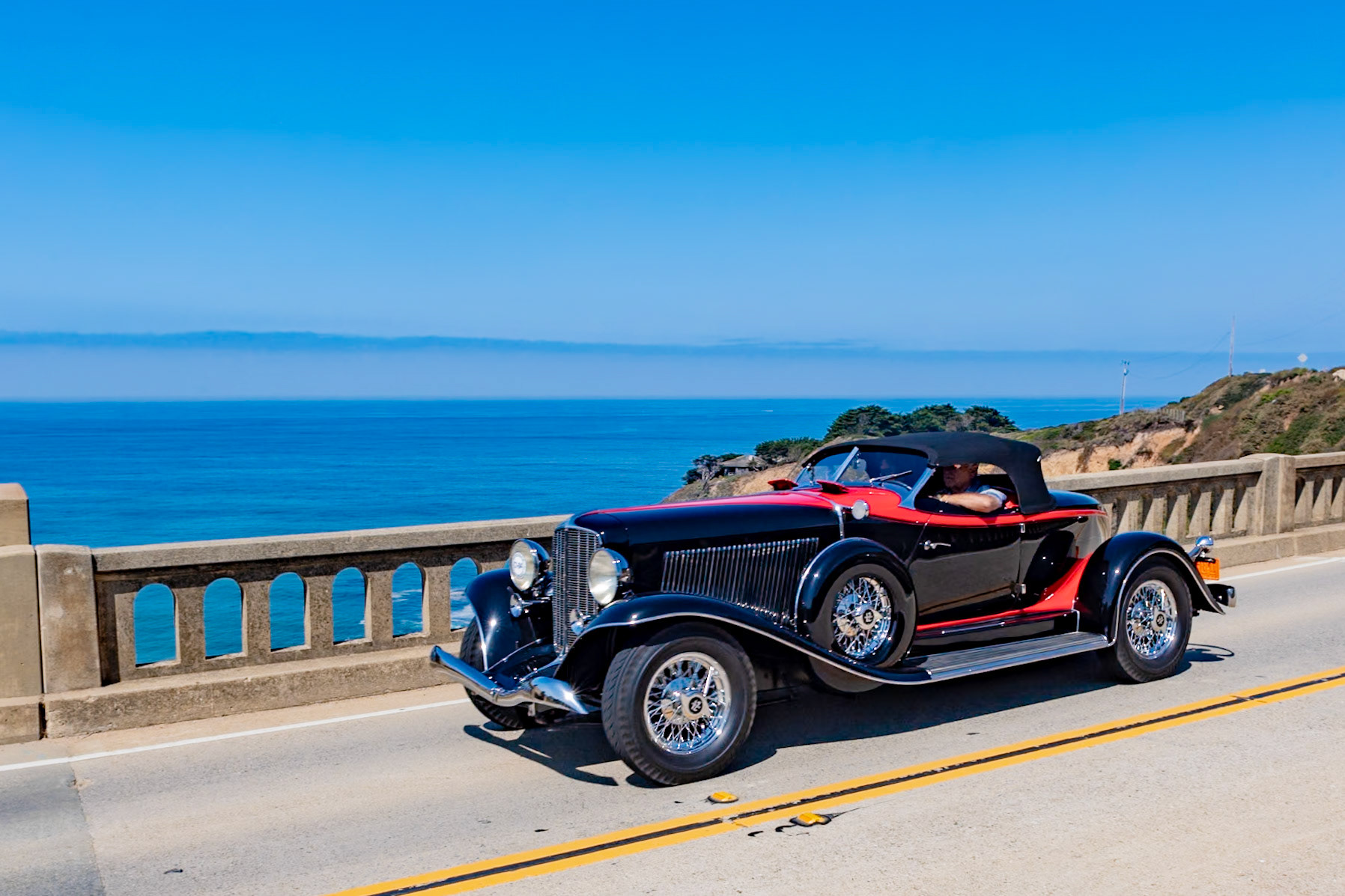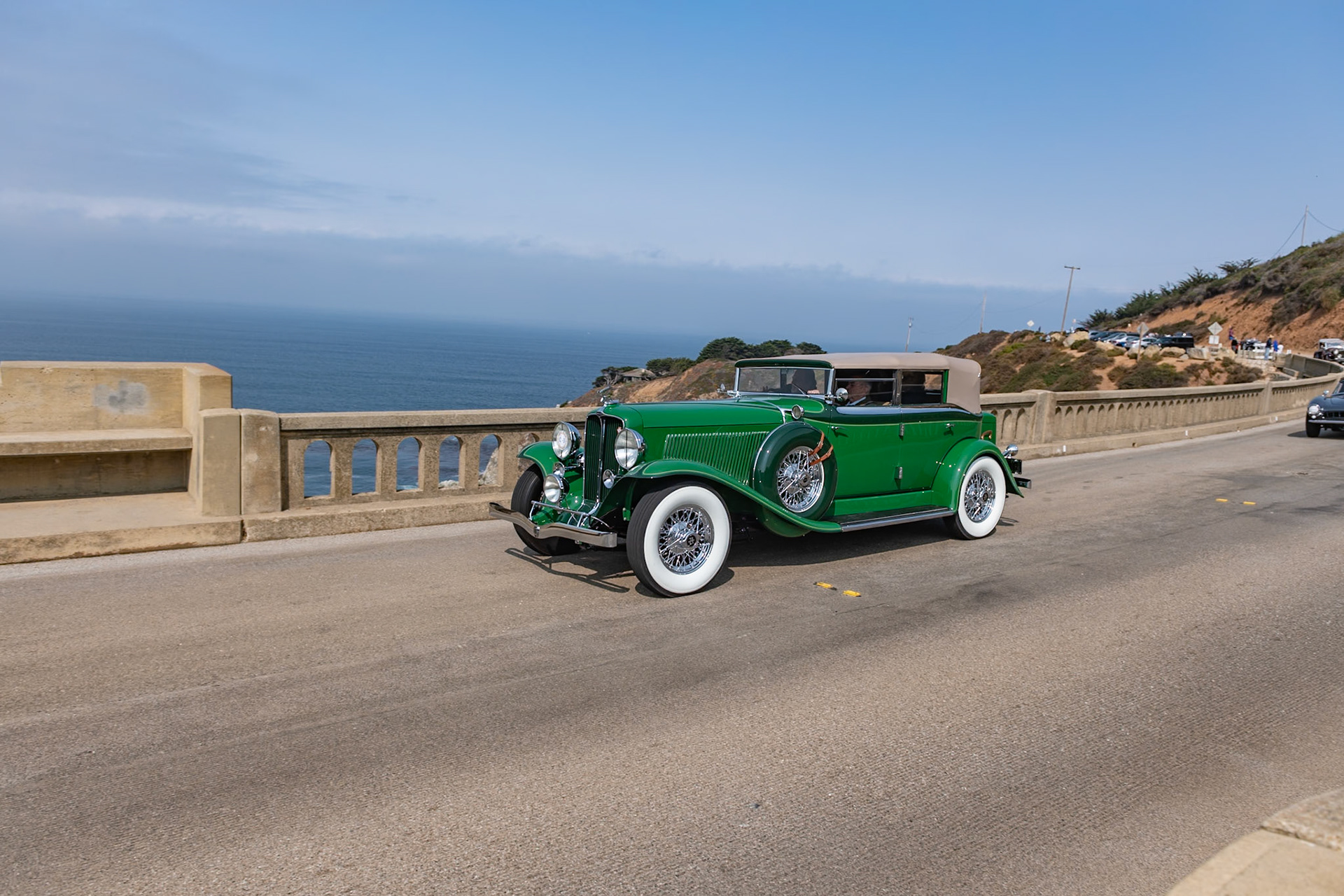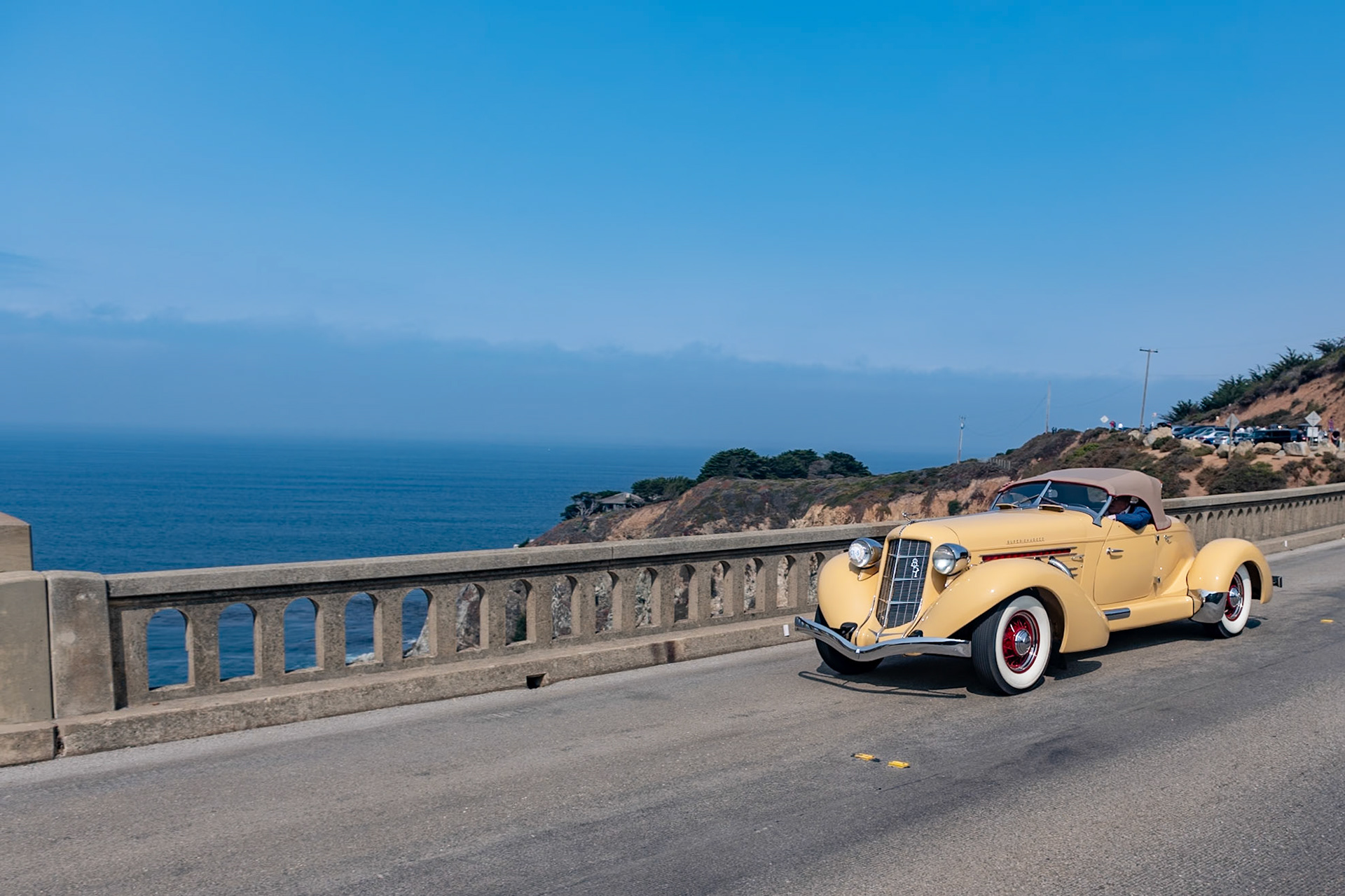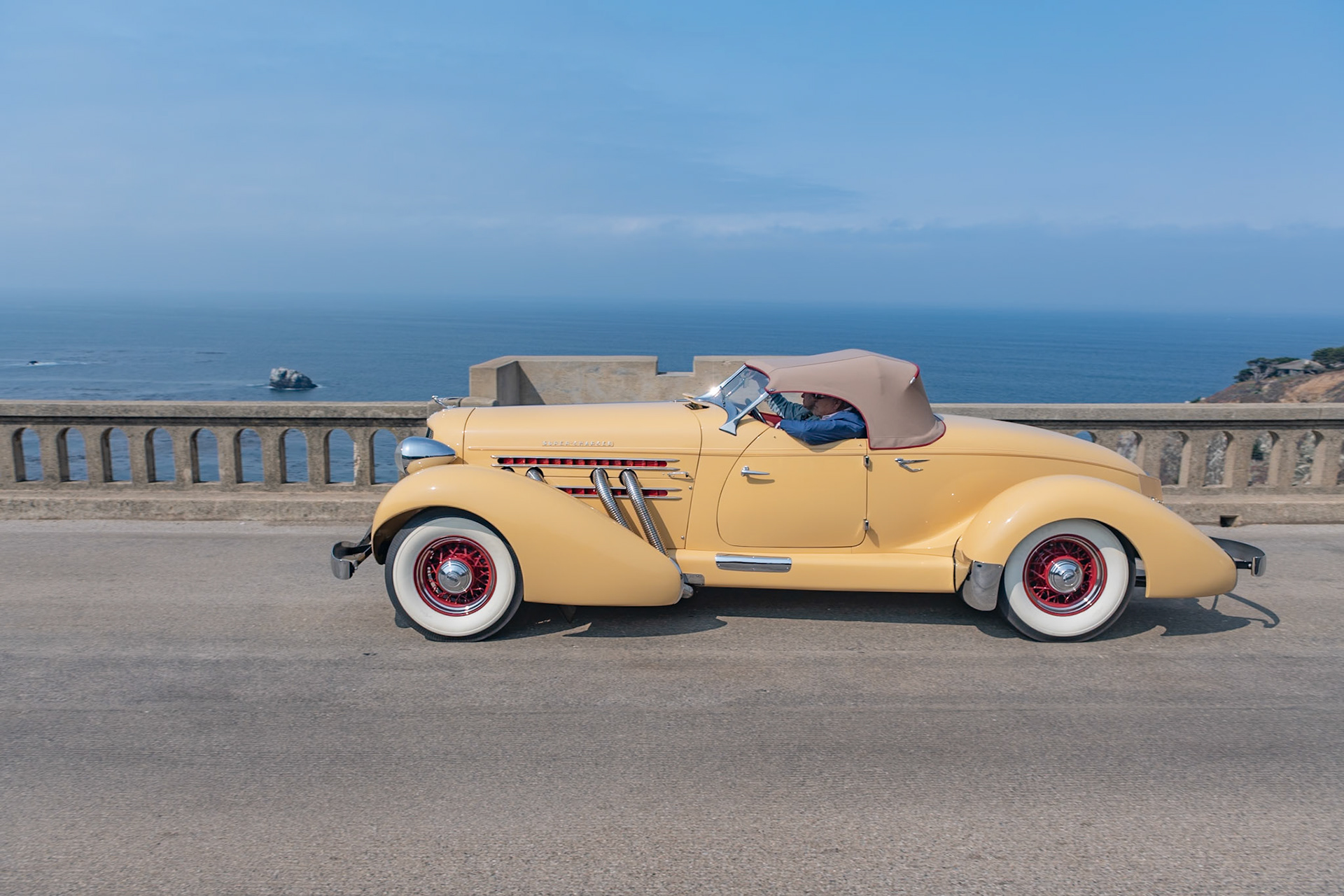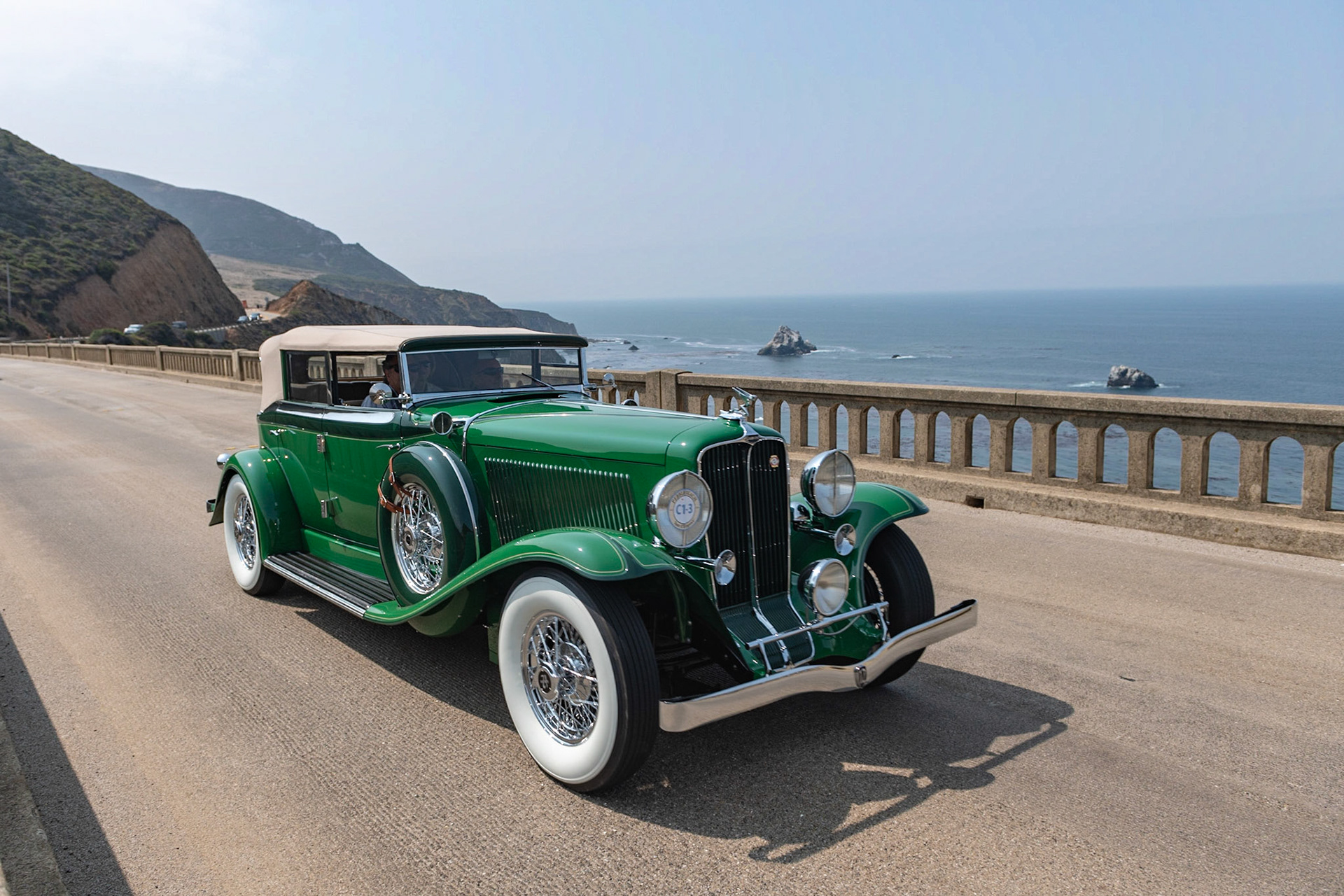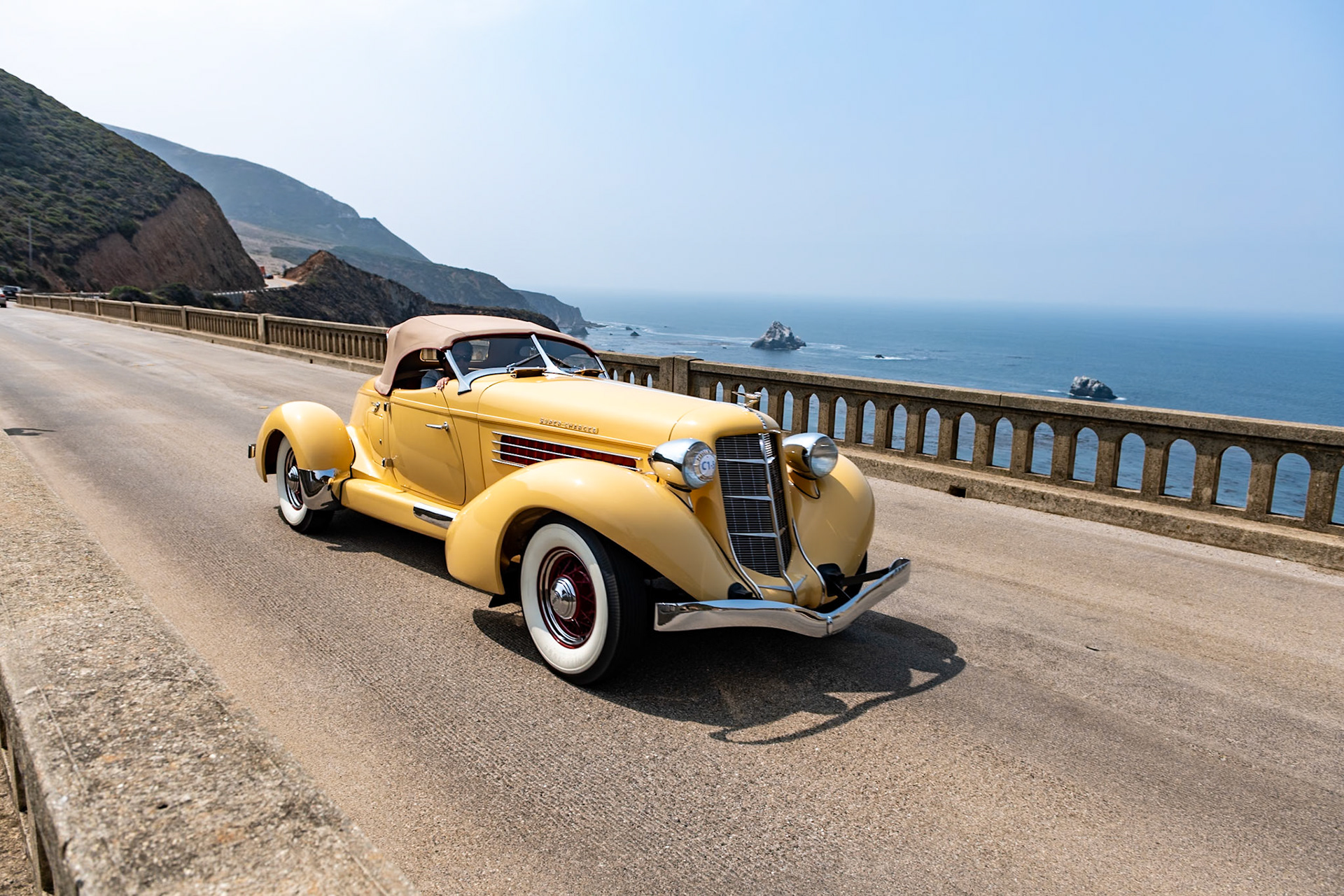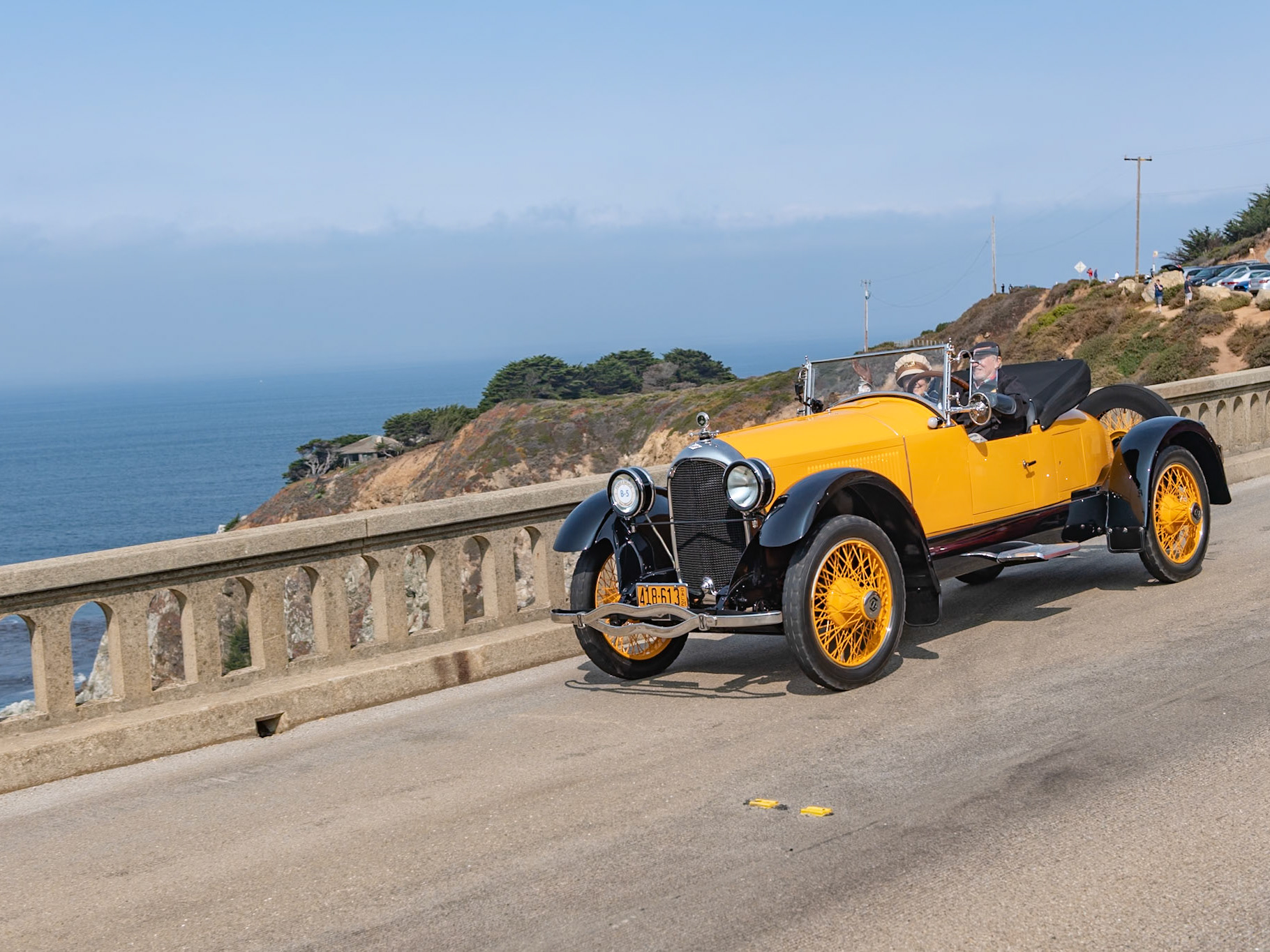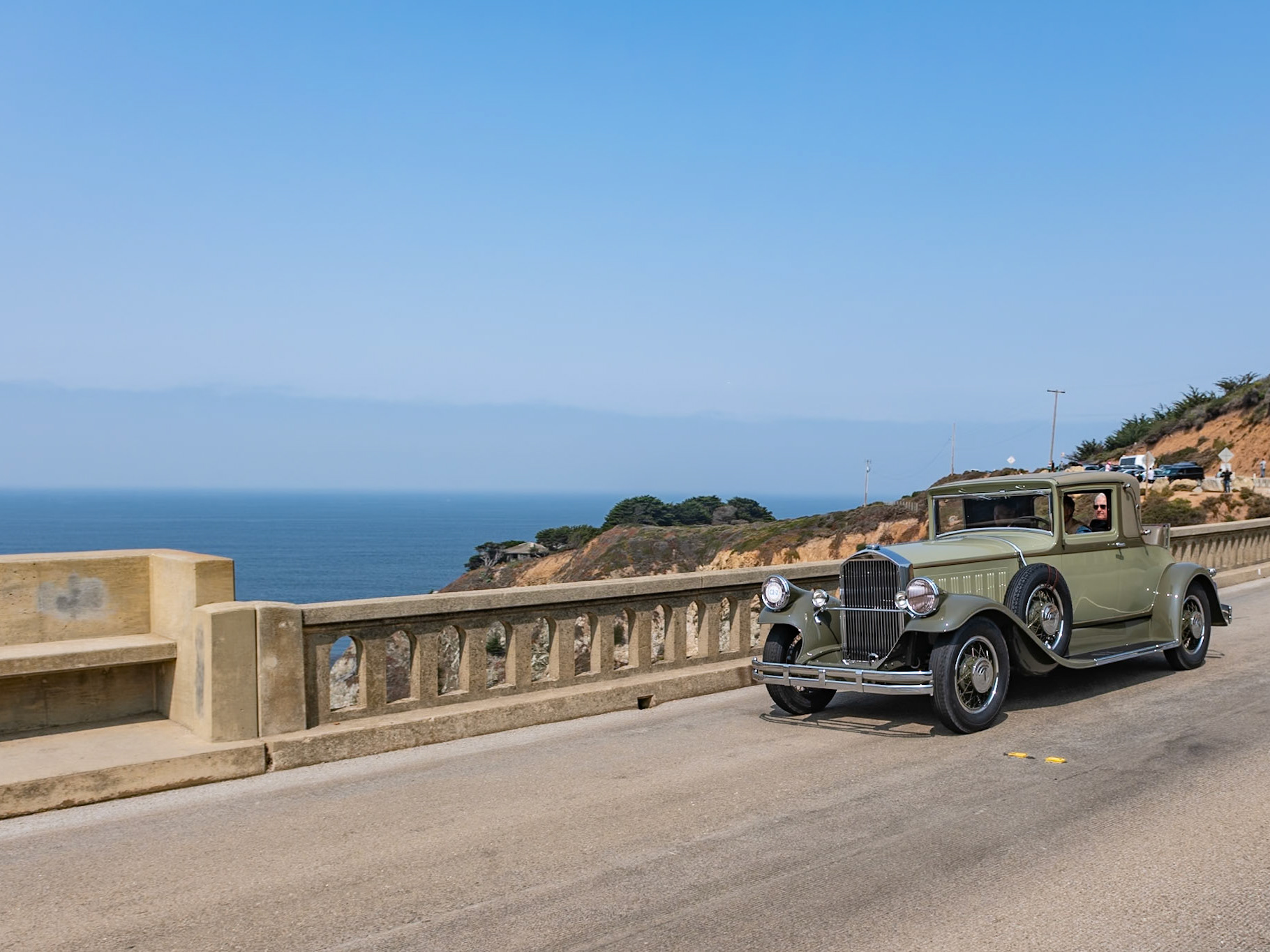
Auburn began building motorcars in 1903, but for a period of 20 years the company was not hugely successful. In 1926, E. L. Cord became Auburn’s general manager and the company began to grow. It was one of the few companies to have increased sales during the Depression, due in part to owning a large number of dealerships. Cord gave the Auburns the style they much needed with the help of the talented designer Al Leamy, who created some of the most striking and sleek designs of the period, including the iconic boattail-shaped Speedster. With their powerful but relatively inexpensive Lycoming V12 engine, these cars won the American Stock Car Championships in 1932 and 1933, recording speeds of up to 117 mph. This is a very rare 1933 Speedster, one of only 16 built that year.

Auburn began building motorcars in 1903, but for a period of 20 years the company was not hugely successful. In 1926, E. L. Cord became Auburn’s general manager and the company began to grow. It was one of the few companies to have increased sales during the Depression, due in part to owning a large number of dealerships. Cord gave the Auburns the style they much needed with the help of the talented designer Al Leamy, who created some of the most striking and sleek designs of the period, including the iconic boattail-shaped Speedster. With their powerful but relatively inexpensive Lycoming V12 engine, these cars won the American Stock Car Championships in 1932 and 1933, recording speeds of up to 117 mph. This is a very rare 1933 Speedster, one of only 16 built that year.

In 1932, E. L. Cord’s Auburn Automobile Company launched a luxurious V12-engined car to compete with offerings from Lincoln, Pierce-Arrow, and Cadillac. Designed by chief engineer George Kublin, the narrow 45-degree V12 produced 160 horsepower from 391 cubic inches. And the car was fitted with Auburn’s famous Dual-Ratio rear axle, which allowed it to be driven either in high-gear ratios for open country roads or in a lower ratio designed for city driving. The coachwork styling from Alan Leamy made these Auburns some of the most beautiful cars of the classic era. Built from 1932 to 1934, the Auburn was listed at a very reasonable $1,795, but due to the economic climate of the time, this price was reduced to an almost cheap $1,295. Recently restored by its current owner, this Auburn 12-160A Phaeton is the earliest surviving example from the seven listed in the Auburn Cord Duesenberg directory.

In 1932, E. L. Cord’s Auburn Automobile Company launched a luxurious V12-engined car to compete with offerings from Lincoln, Pierce-Arrow, and Cadillac. Designed by chief engineer George Kublin, the narrow 45-degree V12 produced 160 horsepower from 391 cubic inches. And the car was fitted with Auburn’s famous Dual-Ratio rear axle, which allowed it to be driven either in high-gear ratios for open country roads or in a lower ratio designed for city driving. The coachwork styling from Alan Leamy made these Auburns some of the most beautiful cars of the classic era. Built from 1932 to 1934, the Auburn was listed at a very reasonable $1,795, but due to the economic climate of the time, this price was reduced to an almost cheap $1,295. Recently restored by its current owner, this Auburn 12-160A Phaeton is the earliest surviving example from the seven listed in the Auburn Cord Duesenberg directory.

Alan Leamy began work as a designer at Auburn Automobile Company in 1928 and styled the marque’s early speedsters. But the later Auburn 851 Speedster was styled by ex-Duesenberg designer Gordon Buehrig and is considered to be his masterpiece. His Auburn 851/852 Speedsters had pontoon fenders and no running boards. The streamlined 2-seater was powered by a 150 hp supercharged Lycoming 8-cylinder engine and was the first stock American car to be timed at over 100 mph for a 12-hour period. Fresh from its frame-off restoration, this very pure 851 Speedster is shown exactly as it was when new, painted in its original colors and with its correct interior trim. Interestingly, this car was originally owned by one of the Auburn’s test drivers.

Alan Leamy began work as a designer at Auburn Automobile Company in 1928 and styled the marque’s early speedsters. But the later Auburn 851 Speedster was styled by ex-Duesenberg designer Gordon Buehrig and is considered to be his masterpiece. His Auburn 851/852 Speedsters had pontoon fenders and no running boards. The streamlined 2-seater was powered by a 150 hp supercharged Lycoming 8-cylinder engine and was the first stock American car to be timed at over 100 mph for a 12-hour period. Fresh from its frame-off restoration, this very pure 851 Speedster is shown exactly as it was when new, painted in its original colors and with its correct interior trim. Interestingly, this car was originally owned by one of the Auburn’s test drivers.

Alan Leamy began work as a designer at Auburn Automobile Company in 1928 and styled the marque’s early speedsters. But the later Auburn 851 Speedster was styled by ex-Duesenberg designer Gordon Buehrig and is considered to be his masterpiece. His Auburn 851/852 Speedsters had pontoon fenders and no running boards. The streamlined 2-seater was powered by a 150 hp supercharged Lycoming 8-cylinder engine and was the first stock American car to be timed at over 100 mph for a 12-hour period. Fresh from its frame-off restoration, this very pure 851 Speedster is shown exactly as it was when new, painted in its original colors and with its correct interior trim. Interestingly, this car was originally owned by one of the Auburn’s test drivers.

In 1932, E. L. Cord’s Auburn Automobile Company launched a luxurious V12-engined car to compete with offerings from Lincoln, Pierce-Arrow, and Cadillac. Designed by chief engineer George Kublin, the narrow 45-degree V12 produced 160 horsepower from 391 cubic inches. And the car was fitted with Auburn’s famous Dual-Ratio rear axle, which allowed it to be driven either in high-gear ratios for open country roads or in a lower ratio designed for city driving. The coachwork styling from Alan Leamy made these Auburns some of the most beautiful cars of the classic era. Built from 1932 to 1934, the Auburn was listed at a very reasonable $1,795, but due to the economic climate of the time, this price was reduced to an almost cheap $1,295. Recently restored by its current owner, this Auburn 12-160A Phaeton is the earliest surviving example from the seven listed in the Auburn Cord Duesenberg directory.

Alan Leamy began work as a designer at Auburn Automobile Company in 1928 and styled the marque’s early speedsters. But the later Auburn 851 Speedster was styled by ex-Duesenberg designer Gordon Buehrig and is considered to be his masterpiece. His Auburn 851/852 Speedsters had pontoon fenders and no running boards. The streamlined 2-seater was powered by a 150 hp supercharged Lycoming 8-cylinder engine and was the first stock American car to be timed at over 100 mph for a 12-hour period. Fresh from its frame-off restoration, this very pure 851 Speedster is shown exactly as it was when new, painted in its original colors and with its correct interior trim. Interestingly, this car was originally owned by one of the Auburn’s test drivers.
